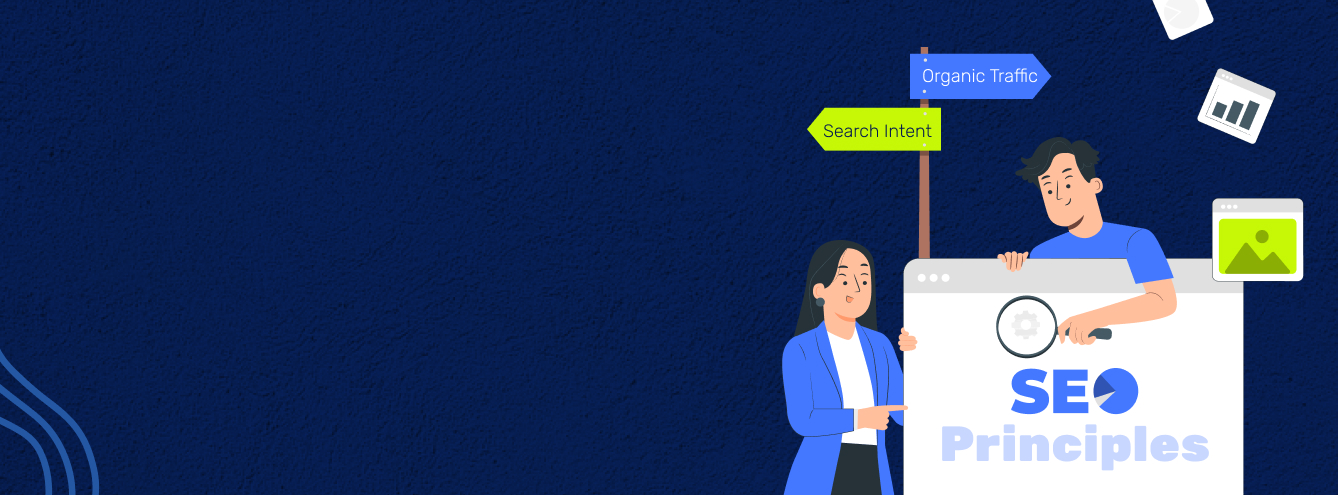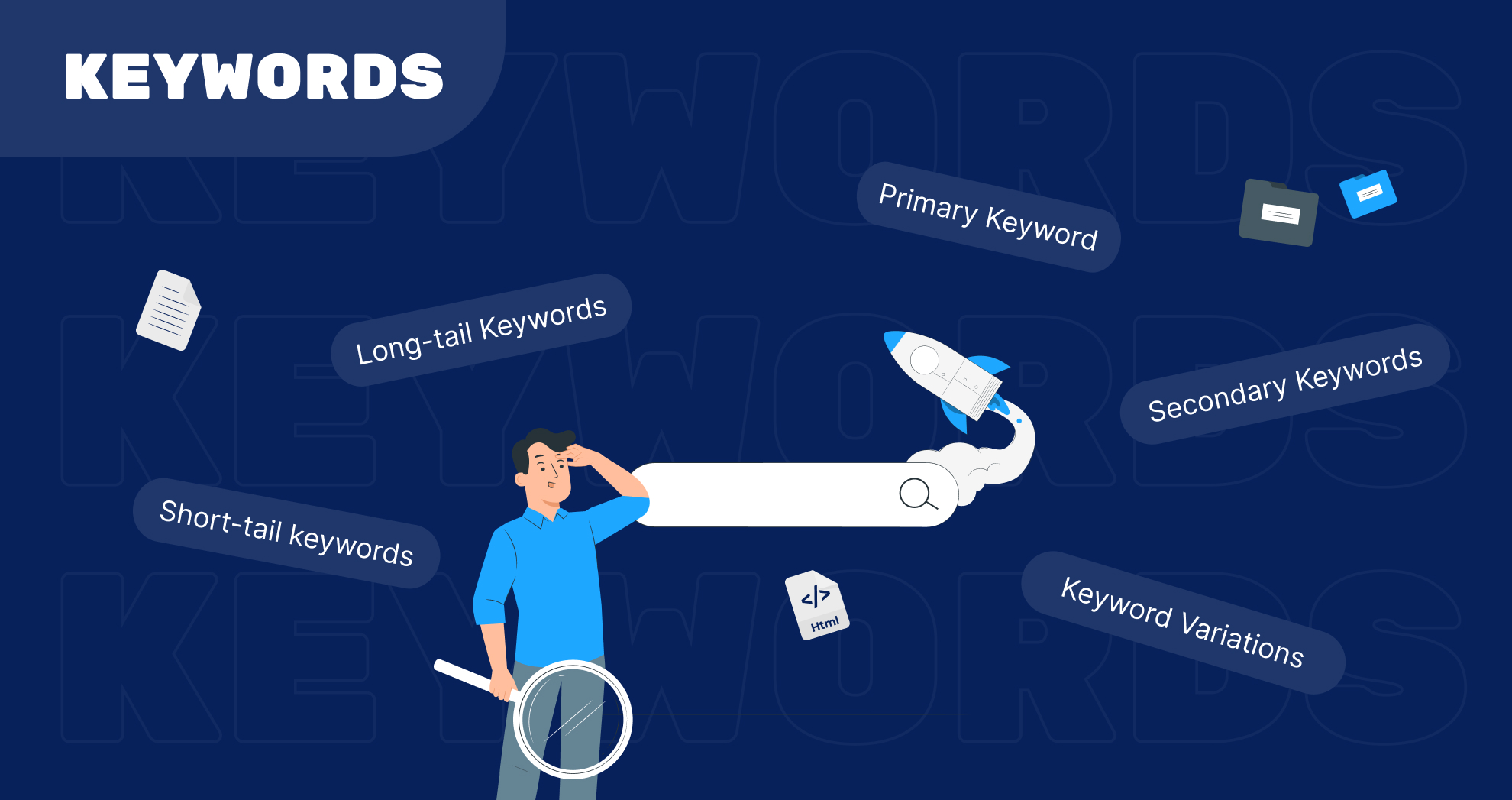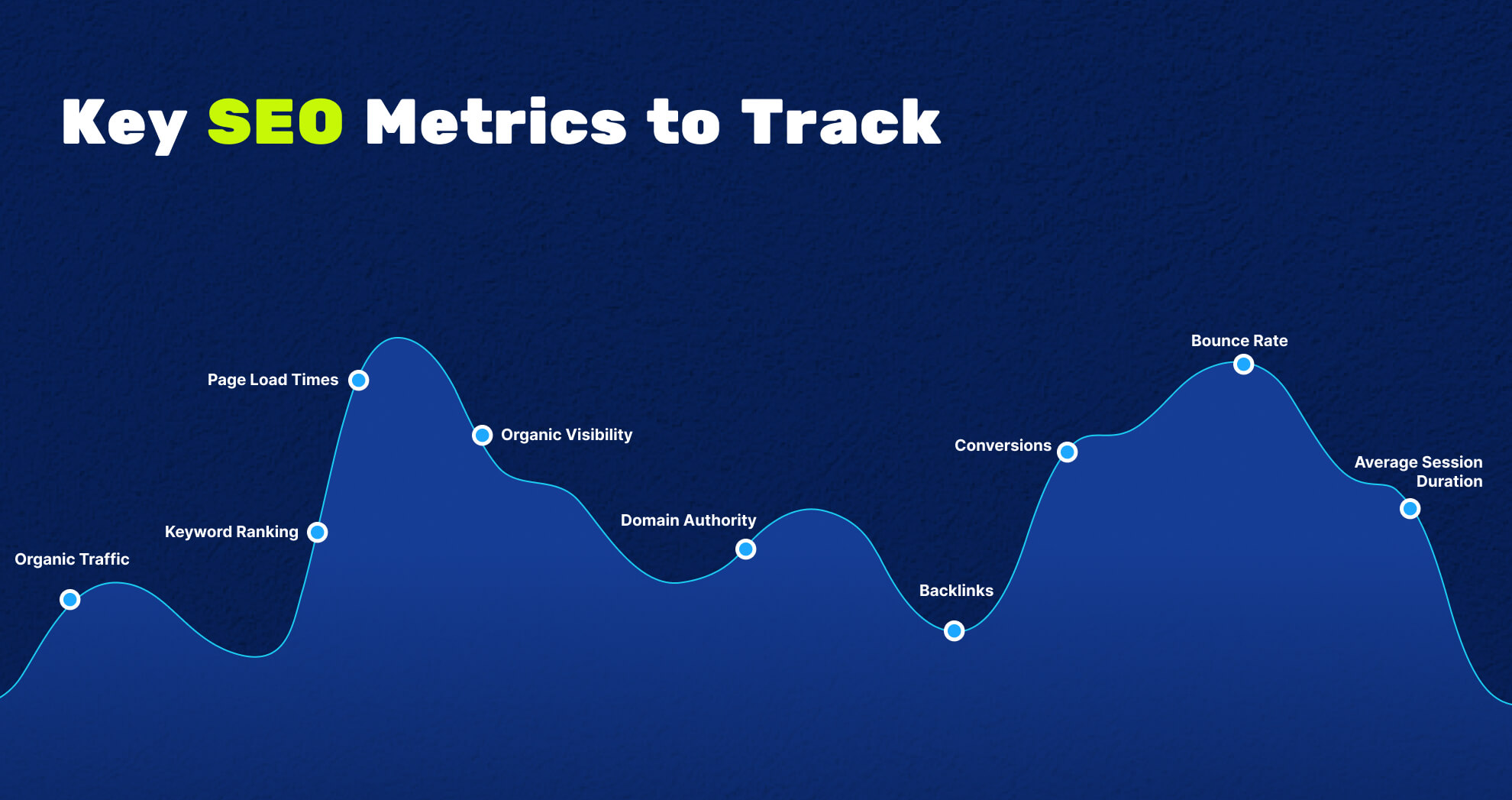Basic SEO Principles: Your Ultimate Guide to Master Organic Growth

 13 min
13 min
Introduction
Imagine devoting your soul to a website just to see it vanish into the internet's black hole. frustrating, right? The truth is your material could as well be invisible without the correct SEO techniques.
SEO (Search Engine Optimization) is about getting the proper eyeballs on your material, attracting possible clients, and developing naturally without paying a fortune for ads, not only about ranking higher. Understanding basic SEO principles will help you regardless of your position—business owner, marketer, or just someone curious in Google's operations—by opening a secret road map to online success.
SEO is a science grounded on logic, algorithms, and user behavior; it is not magic. The best thing about it is Anyone can become proficient with appropriate direction. We will dissect the basics of SEO principles in this book in an interesting, useful, and doable approach. nor fluff, nor jargon—just practical ideas that work.
What is SEO and Why Should You Care?
Making your website more discoverable by search engines like Google, Bing, and Yahoo is both art and science, known as SEO. Still, it's about visibility, reputation, and sustainability not only about ranking.
Consider this: When was your most recent click past Google's first page of results? Surely never. Businesses battle valiantly to land on page one. Correct SEO techniques can make all the difference between a forgotten website gathering dust and a profitable company.
Still, SEO is not only for companies. Whether you blog, create art, or even apply for a job, knowing what SEO techniques are familiar to you will help you stand out in a digital environment growingly competitive. Aligning your material with what people look for and what search engines prioritize is the simple aim here.
Why should you care?
- Unlike sponsored adverts, SEO enables you to get traffic without ongoing expenditure of money—organic traffic is free.
- Users of a well-ranked organic result are more likely than those of a sponsored ad to click on it.
- Years of steady traffic driven by a well-optimized website can yield long-term advantages.
Basically, best practices and SEO principles enable you to interact with your audience when most needed.
Want More SEO Traffic?
Share your website with us and We’ll tell you what you’re Doing Wrong!
Get a FREE CONSULTATION
Search Engine Algorithms: Understanding The Building Blocks
Search engines choose which pages show first in search results by means of sophisticated algorithms. You need not be a computer scientist, though, to grasp the fundamentals; this is not something to panic about.
Fundamentally, search engines are driven to offer consumers with the most pertinent, premium information. They assess online sites in consideration several criteria, including:
- Relevance: Is what the user is looking for matched by your material?
- Authority: Is your website reliable? Exist additional websites connecting to it?
- User Experience: Is your website simple to use, speedy, mobile-friendly?
These elements are dynamic; Google tweaks its algorithm hundreds of times annually alone. For this reason, one must first grasp the principles of SEO strategy. It's not only about filling sites with keywords—that actually reduces your ranks. It's about following search engine guidelines while producing something people actually find worthwhile.
Ever heard of PageRank in Google? It is the mechanism that assesses links to ascertain the authority of a page. Consider it as a referral network: search engines presume you are worth looking at if credible sites link to you.
Simply said, Though they change with time, SEO principles and best practices always center on giving users the greatest possible experience.
Keywords: The Foundation of SEO Success

Keywords would be the king in a game of chess if SEO were such. They control who finds your material, when they come upon it, and why. The catch is, though, keyword research goes beyond only identifying the most often used words. It's about knowing search intent and deliberately selecting appropriate language.
Assuming you run a bakery, for instance, let me explain Aiming for broad phrases like "cake" won't help very much. Rather, you would want long-tail keywords like "best chocolate cake recipe" or "custom birthday cakes in New York," which are less competitive, more precise, and more likely to get the correct audience to your website.
Types of Keywords You Need to Know:
- Broad words like "shoes" (strong search volume, but competitive) have short tails.
- Long-tail keywords—specific phrases like "best running shoes for flat feet"—have lesser volume but greater conversion rates.
- Related terms that enable search engines better grasp your content—e.g., for "coffee shop—LSI keywords may be "espresso," "latte," and "café."
The most common error people make is treating keywords as a checklist instead of a component of their work. Smarter than ever, Google can identify keyword stuffing and penalize websites that violate it. The secret is to seamlessly integrate SEO principles into useful, interesting material instead than imposing them into every line.
Higher ranks and improved interaction will follow from a mastery of fundamental SEO principles, particularly with regard to keyword strategy.
On-Page SEO: Optimizing Your Website's Content
On-page SEO is the junction of strategy and imagination. It's about creating something that search engines and actual people enjoy, not only about stuffing keywords onto a page and wishing for the best.
See your website as your storefront. People will walk away from your dirty windows, unclear signs, and disorganized layout. The same is true online; if your website is not optimized, Google and visitors will depart equally quickly.
Key On-Page SEO Elements That Matter
- Title Tags & Meta Descriptions: These are basically the first impression search engines and users get from your website. Clicks rise from a clear, interesting title and description. For instance, use " Stylish & Comfortable Running Shoes – Free Shipping," instead of "Shoes – Buy Now."„
- Header Tags (H1, H2, H3, etc.): These help search engines understand your material and organize it. It also makes reading easier; nobody wants to sift through a massive block of material.
- Keyword Optimization: Combine naturally occurring keywords. It is incorrect if it sounds forced. Google is clever enough to grasp context; hence, instead of putting "SEO principles" in every line, have it flow naturally.
- Internal Linking: Guide users over your site with links to pertinent material. It increases involvement, raises search engine optimization, and prevents bouncing away of visitors.
- Image Optimization: Compress photos for quicker load times and apply alt text—descriptive language for search engines. For instance, instead of "IMG_2345," use "blue-running-shoes-men."
- Mobile-Friendliness: More than 60% of searches take place on mobile devices. Your site is losing visitors if it is not responsive.
On-page search engine optimization is about balance—strategic improvement without compromising user experience. Google will too adore your material if others enjoy it.
Technical SEO: The Backbone of a Well-Optimized Site
Technical SEO is the backbone of your website; while on-page SEO is its "face," technical SEO is the component ensuring seamless operation under the hood. If your website is slow, broken, or difficult to crawl, even the best content won't show up.
What Makes Technical SEO So Crucial?
- Site Speed: An abandoned site is a slow site. Pages should load in Google under three seconds. Enable caching, compress pictures, and cut needless code.
- Crawlability & Indexing: Search engines "crawl," or index, your site using bots. Should they fail to traverse your site, search results will not show your material. Find your key pages using sitemaps and robots.txt.
- Broken Links & Redirects: Dead links are like obstacles for search engines as well as for consumers. Check and mend broken links often; utilize 301 redirects for any moved pages.
- Mobile Optimization: Google now emphasizes the mobile version of your website by using mobile-first indexing, thereby guiding your design. Should it be not mobile-friendly, your rankings will suffer.
- SSL & Security: These days, a secure website (HTTPS) ranks highly rather than being optional. Users of sites with a secure connection also trust them.
Though it's not the most interesting aspect of optimization, technical SEO is the cornerstone keeping everything together. Ignore it; even the finest material won't fully realize itself.
Off-Page SEO: Building Authority and Trust
SEO continues beyond your website. All of off-page SEO is about what happens outside of your domain—establishing authority, reputation, and trust in your field of business.
Consider it similar to networking. People will treat you seriously if reputable persons vouch for you. This translates in SEO into backlinks, brand references, and general internet presence.
How to Strengthen Off-Page SEO
- Backlinks are like other websites' "votes of confidence." Not all connections are equal, though; a single high-quality link from a reliable site—such as Forbes or HubSpot—is worth hundreds from dubious, low-authority pages.
- Guest blogging and PR help to establish authority and generate referral traffic by means of industry blogs or online publication features.
- Social Media Signals: Shares, mentions, and interaction assist increase brand visibility and traffic even if social media does not directly influence rankings.
- Podcasts & Interviews: Getting featured in trade podcasts or online debates positions you as a thought leader and generates natural backlinks.
- Local & Niche Directories: If you run a local business, listing Google My Business, Yelp, and specialized directories increases web presence.
Off-page SEO is about reputation. You will rank higher and search engines will trust you more the more authority your website acquires over the internet.
Local SEO: Reaching Your Local Audience
Local SEO is non-negotiable whether you run a brick-and-mortar store or service clients at designated sites. Being invisible in local searches differs from showing up when someone searches "best coffee shop near me".
How to Win at Local SEO
- Your best local ranking factor is Google My Business (GMB). Verify that your listing is completely optimal—correct business name, address, phone number (NAP), business hours, images, and reviews.
- Reviews & Ratings: Google gives companies with real consumer reviews top importance. Promote happy consumers to provide comments; this helps to establish credibility and raises ratings.
- Target location-based keywords naturally from your local vocabulary. For instance, replace "best hair salon," with "best hair salon in Los Angeles."
- Consistent NAP Information: Google emphasizes consistency; so, your company name, address, and phone number must be exactly same throughout all listings.
- Local Citations & Directories: Being shown in local business directories (Yelp, TripAdvisor, Yellow Pages) increases local visibility.
Small and medium companies can compete with larger brands thanks in part to local SEO. You are losing out on possible clients only in your neighborhood if you are not maximizing for local searches.
SEO Analytics and Tools for Measuring Success

SEO is a data-driven approach not a guessing game. You can maximize your website all you want, but without monitoring outcomes, you will not know what is failing or functioning. Here is where tools like SEO analytics help.
Imagine trying to lose weight without ever setting on a scale. You wouldn't know if your work paid off. SEO is no different in this regard. Metrics help you to track development and modify your approach.
Key SEO Metrics You Should Track
- Organic Traffic: How many people from search engines visit your website? Increasing natural traffic indicates that your SEO initiatives are paying off.
- Keyword Rankings: Where on search results for focused keywords your site shows. Higher ranks indicate higher visibility.
- Click-Through Rate (CTR): The proportion of users that visit your site following a search result view. Should your CTR be poor, your title and meta description could need some work.
- Bounce Rate: The proportion of people leaving your website following just one page view. A high bounce rate can point to delayed loading times or inadequate material.
- Backlinks: Count and grade the websites that link to your pages. More excellent backlinks equate to more authority.
Top SEO Tools to Help You Track Performance
- Google Analytics: The best free tool available for monitoring website traffic, user behavior, and conversions.
- Google Search Console: Aids in monitoring indexing, keyword ranks, and site health concerns.
- Ahrefs / SEMrush: Excellent tools for competitor analysis, keyword research, and backlink tracking.
- Moz Pro: Offers thorough SEO analysis covering domain authority and keyword difficulty.
- Screaming Frog: A website crawler designed to find technical SEO problems including duplicate content and broken links.
Success with SEO comes from doing what works, not from doing more. Using the correct analytics and tools can help you to optimize your plan and realize long-term natural development.
The Worst SEO Mistake you can make is Not Hiring US!
Don’t Worry, There’s still time to unlock Your Organic Growth Potential!
Talk to our SEO Experts!
Common SEO Mistakes to Avoid
SEO is always changing and even seasoned marketers make blunders. While some mistakes waste time and effort, others might damage ranks. The secret is to spot and fix them before they cost you traffic.
Top SEO Mistakes That Could Lower Your Page Rank
- Ignoring Search Intent: Targeting keywords without knowing what users actually desire results in poor engagement and high bounce rates. Match content to user intent always.
- Keyword Stuffing: Google is far too clever for this conventional wisdom approach. Forced keyword overloading of material renders it illegible and damages ranks.
- Neglecting Mobile Optimization: You are losing out on almost half of worldwide searches if your website is not mobile-friendly.
- Slow Page Speed: One instant turnoff is a slow-loading website. Users (including Google) will abandon your page if it takes eternity to load.
- Ignoring Technical SEO: Your results could be seriously lowered by broken links, missing meta tags, and incorrect redirecting.
- Not Optimizing for Local SEO: If you run a physical store, neglecting to maximize for local searches will cost you possible business.
SEO is about avoiding expensive mistakes as much as about following guidelines. Correcting these typical mistakes will help your website run much better.
The Future of SEO: Trends to Watch
SEO is a shifting objective; it is not fixed. Something that is current now could be out-dated tomorrow. Companies that want to keep ahead have to predict and change with new trends.
Important SEO Trends That Will Shape the Future
- AI & Machine Learning: Google's AI-driven algorithms—such as RankBrain—are becoming more intelligent in grasping search intent. Natural, user-oriented content will define SEO going forward instead of keyword strategies.
- Voice Search Optimization: Smart assistants (Alexa, Siri, Google Assistant) are driving increased voice search activity. Maximizing for conversational, long-tail keywords will be absolutely vital.
- E-E-A-T (Experience, Expertise, Authoritativeness, Trustworthiness): Google these days gives content from reliable sources top priority. Companies have to concentrate on developing trust and authority.
- Video SEO: Platforms like YouTube are search engines unto themselves. More interaction will result from optimizing video material for SEO-friendly titles, descriptions, and tags.
- Zero-Click Searches: Often featured snippets, knowledge panels, and fast answers offer information without consumers browsing a page. Maximizing for rich results guarantees visibility even in cases when users do not click.
SEO's future is in quality, relevance, and user experience. Companies who welcome these developments will rule search results; those who oppose will fall behind.
Conclusion
SEO is a dynamic, always changing approach that calls consistency, flexibility, and a thorough knowledge of search engine activity rather than only a checklist. From perfect on-page and technical SEO to using off-page tactics and local optimization, every component is essential in increasing your exposure and authority.
Following SEO guidelines and best practices will help companies build a strong basis for steady expansion. More significantly, using organic SEO services guarantees long-term rankings free from reliance on paid advertising and generates high-quality traffic that turns.
Though the digital terrain will always be shifting, one thing is certain: those who keep ahead of the curve will have SEO success. Never stop learning; keep optimizing; see how well your company grows.
FAQs
SEO principles are the foundational guidelines for optimizing a website to improve its visibility in search engine results. These include keyword research, on-page optimization, content quality, technical SEO, link building, and user experience. They ensure a site is both search engine-friendly and valuable to users.
The key principles of SEO include keyword research, on-page optimization, content quality, technical SEO, link-building, and continuous adaptation to search engine algorithms.
The 4 P's of SEO are Product (quality content), Place (platform optimization), Price (cost-effectiveness), and Promotion (link-building and social media signals).
E-E-A-T stands for Experience, Expertise, Authoritativeness, and Trustworthiness. These principles focus on creating credible, high-quality content that positions your site as a reliable source of information.
Edifying Voyages is well versed with principles like keyword research, content optimization, technical SEO, E-E-A-T, mobile-friendliness, site speed, and backlink strategies, all aimed at improving search visibility and user experience.
SEO and ADA principles involve optimizing your website for both search engines and accessibility, ensuring it is user-friendly for everyone, including individuals with disabilities, while also boosting search rankings.




